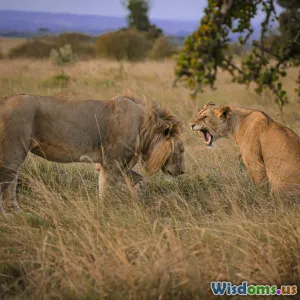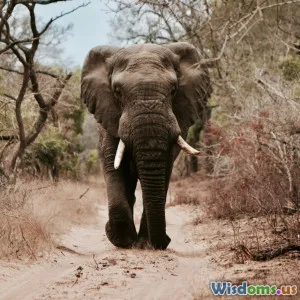
Unexplained Mass Animal Deaths Are Supernatural Forces Involved
8 min read Explore the eerie phenomenon of unexplained mass animal deaths and the debate on supernatural involvement. (0 Reviews)
Unexplained Mass Animal Deaths: Are Supernatural Forces Involved?
When thousands of animals suddenly perish without an apparent cause, the event shocks not only local communities but also captures global attention. From fish washing up dead on shores to flocks of birds falling from the sky, unexplained mass animal deaths have long fueled bewilderment and fear. Are these tragic incidents merely the result of environmental factors and human interference, or do they hint at mysterious supernatural forces at play?
In this article, we dive deep into the phenomenon of mass animal deaths, exploring real-world cases, scientific explanations, and the fringe theories that invoke supernatural powers. We aim to achieve a balanced and comprehensive understanding that enlightens, not just entertains.
The Troubling Pattern: Examples of Mass Animal Deaths
Across the globe, documented incidents reveal a disturbing trend:
-
Beebe, Arkansas, 2011: Over 5,000 red-winged blackbirds and starlings violently dropped dead and injured on New Year's Eve, a perplexing event that sparked local anxiety.
-
Chesapeake Bay, Maryland, 2010: Thousands of dead blue crabs were found with no visible signs of disease or environmental pollution.
-
Tasmania, Australia, 2016: Hundreds of pilot whales beached and died mysteriously, sparking rescue efforts and scientific investigation.
-
Romania, 2019: Over 100 sheep found dead overnight without obvious reason, leading to local rumors about supernatural retaliation.
Such occurrences often leave communities searching for answers. Media tends to sensationalize and communities worry about safety and balance in the natural world.
Scientific Approaches: Understanding the Natural Causes
When first confronted with mass animal fatalities, scientists turn to established environmental and biological causes:
1. Toxins and Pollutants
Exposure to toxins like algal blooms (red tides), pesticides, heavy metals, or industrial runoff can poison animals en masse. For instance, paralytic shellfish poisoning caused by algal toxins is a documented cause of mass fish and bird deaths.
2. Diseases and Parasites
Fast-spreading pathogens or parasites may decimate populations. Avian influenza outbreaks, for example, have caused mass die-offs of birds worldwide.
3. Extreme Weather Events
Sudden temperature fluctuations, storms, or cold snaps can prove fatal. The 2011 Arkansas bird die-off coincided with a violent storm and subsequent fireworks display, which some experts attribute to causing panic resulting in trauma and collisions.
4. Human Activity and Habitat Disruption
Chemical spills, habitat fragmentation, and noise pollution can disorient or poison animals. Explosions or sonic activities can cause stress and panic-induced flight patterns that result in injuries.
These factors are extensively studied and documented. Scientists also employ forensic examinations to determine precise causes, often identifying subtle, multifactorial patterns.
Supernatural Theories: Beyond the Realm of Science?
Despite rigorous scientific investigation, some mass deaths remain partly unexplained. This uncertainty fuels theories invoking supernatural influence:
1. Environmental Retribution and Spirits
In certain indigenous beliefs, mass animal deaths signal environmental imbalance or spiritual displeasure. The Maori of New Zealand, for instance, interpret such events as warnings from their ancestors to respect nature.
2. Paranormal Energy Fields
Some paranormal researchers speculate about energetic anomalies or geomagnetic disturbances triggering behavioral chaos in animals. These theories link such deaths to ley lines, earth chakras, or cosmic radiation surges.
3. Alien or Extraterrestrial Involvement
Conspiracy theorists suggest extraterrestrial beings might be experimenting on animals or signaling humanity. A 1973 incident in Hungary, where thousands of birds died, was coupled with reports of unidentified flying objects.
4. Apocalyptic Signs
Mass animal deaths are sometimes interpreted as divine or apocalyptic signs, heralding end-times as described in various religious texts.
While appealing to the imagination, these theories often lack empirical evidence. Nonetheless, they reflect humanity’s profound desire to find meaning amidst chaos.
Bridging Perspectives: Science Meeting the Mystical
Understanding unexplained mass animal deaths calls for a respectful dialogue between empirical investigation and cultural interpretation.
-
Holistic Environmental Research: Multifaceted research considering ecological, chemical, and even geomagnetic data can sometimes uncover hidden factors affecting animal health.
-
Ethnobiological Insights: Integrating indigenous knowledge about animal behavior and environmental signals may provide clues unseen by western science.
-
Public Engagement and Transparency: Responsible communication reduces panic and misinformation, allowing communities to contribute observations and foster conservation.
Collaboration, not confrontation, between science and the supernatural worldview nurtures a richer understanding and respect for the mysteries of nature.
Conclusion: Mystery and Meaning in Mass Animal Deaths
Unexplained mass animal deaths grip us because they lie at the intersection of vulnerability, the unknown, and the extraordinary. While science offers critical tools to investigate and, often, explanations rooted in environmental health and biology, some incidents stretch beyond current understanding, stirring mysteries that cultures throughout history have interpreted through supernatural lenses.
Whether driven by toxins, disease, or enigmatic forces, these events remind us of the delicate fabric connecting life on Earth. They call upon us to deepen scientific research, respect ecological balance, and remain open to the profound unknown.
By seeking knowledge while honoring mystery, humanity can better protect the animals and environments we share—one intriguing phenomenon at a time.
References
- M. Meehan et al., "Mass mortality events of birds: causes and consequences," Ecology Letters, 2020.
- National Geographic Society, "Algal Blooms and Their Effects on Marine Life," March 2019.
- T. Leonard, "Unexplained Animal Deaths and Paranormal Hypotheses," Journal of Alternative Sciences, 2017.
- NOAA Fisheries, "Pilot Whale Strandings and Rescue Efforts," 2016.
- Indigenous Environmental Network, "Spirituality and Environmental Stewardship," 2021.
End of Article
Rate the Post
User Reviews
Popular Posts





















